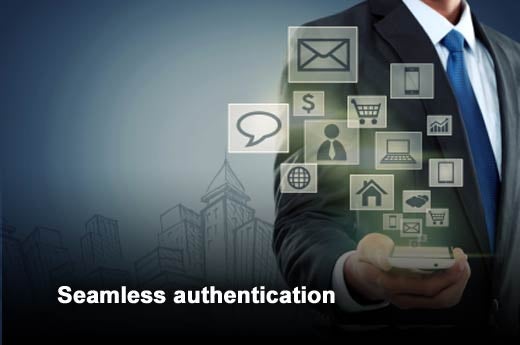The need for connectivity is a constant in the average consumer’s day-to-day life. Today, nearly every task we undertake involves a smartphone, the Internet or Wi-Fi. Not only are we reliant on being connected at home and at work, we expect wireless connectivity every place in between, from the car to the coffee shop to the airport en route to our next meeting.
With business now moving at the speed of 4G, mobile connectivity has become central to the success of most organizations. Poor mobile connectivity impacts the productivity and effectiveness of the workforce, drives up support costs for IT, and ultimately impacts the bottom line. Smith Micro has identified the top five connectivity perils plaguing enterprises today, and provided tips on how to avoid these costly mishaps.

Click through for five ways employees can avoid connectivity issues, as identified by Smith Micro.

The growing “bring your own device” (BYOD) trend has resulted in employees using multiple devices to connect to the network while at work. Too many devices on the corporate network can present serious bandwidth issues resulting in slower network speeds and the inability to access critical systems and data.
To maximize your network bandwidth, be sure to incorporate network policy controls into your enterprise mobility strategy. The ability to implement policies for cellular and Wi-Fi network connections will allow you to balance network performance with infrastructure and data costs.

Password-protected networks and systems are essential for an enterprise to remain secure. However, dropped wireless connections force employees to re-enter long, complicated codes each time they reconnect, wasting time, frustrating users and driving up calls to the support desk.
To save time and reduce support burden, utilize a carrier-agnostic connection application that provides automatic network authentication and convenient features for users, such as single sign-on and connect before login. With a consistent and configurable connection manager, users spend less time getting connected and more time staying connected.

Corporate road warriors learn how to navigate in and out of coverage areas, but the typical mobile device user doesn’t know – or care – which network they’re using. They just want the fastest, easiest connection, and cost is rarely considered when the company is paying the bill.
With the prevalence of public and private Wi-Fi networks – at home, restaurants and other public places – companies can save significant money by taking advantage of Wi-Fi access from smartphones and tablets. Wi-Fi apps are available that can detect secure Wi-Fi networks nearby and facilitate login for users. They can even turn on Wi-Fi radios that have been switched off by the user, and revert back to cellular when Wi-Fi connections are poor.

Much like BYOD, BYON (bring your own network) has become a trend in the workplace where employees access corporate data through a non-secure mobile hotspot. While pucks and smartphones with hotspot features offer convenience to connect multiple devices, hotspot users may not realize they are also hosting the stranger sitting next to them in the hotel lobby, or kids in the backseat streaming Netflix movies.
According to survey results, almost half of IT managers admit to having inadequate controls over mobile hotspots. However, there are solutions that can restrict how hotspots are used, which not only increases network security but can also reduce data costs associated with unauthorized use.

The biggest risk associated with mobility is still the lost or stolen mobile device. A wide variety of device management (DM) solutions can remotely lock and wipe data from devices, but for BYOD environments, that means wiping the personal data along with the corporate data, and some users may consider that overbearing.
Containerization is a feature that allows IT managers to isolate the applications and data associated with the business from those belonging to the individual. When selecting a DM solution, make sure policies can be enforced that protect the business side of mobile devices while also protecting personal privacy.














